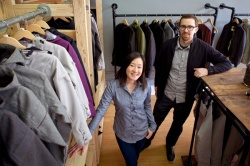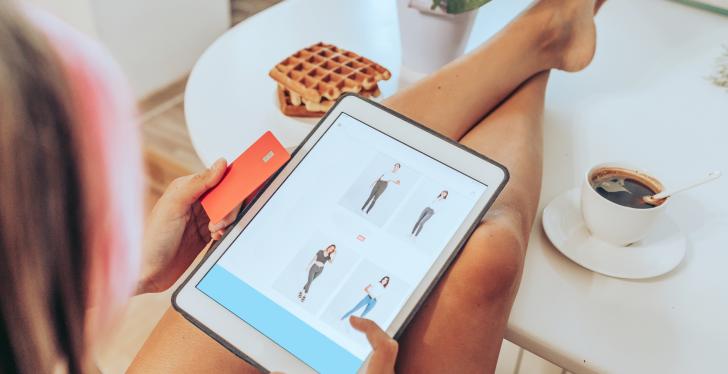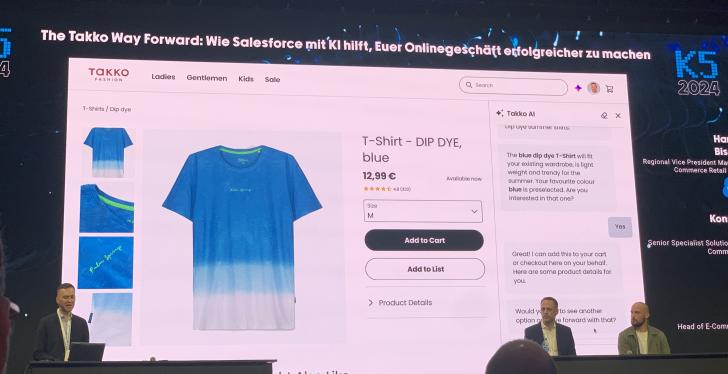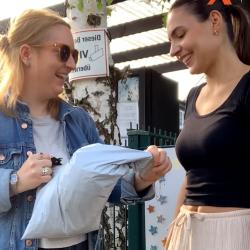Company News • 25.03.2013
Clothing Companies Trying to Find More Direct Paths to Customers

When Joanne and Tim Medvitz founded an outdoor clothing company, Pop Outerwear, in San Francisco in 2009, they were sure of one thing. They were going to sell their clothing directly to consumers, whether online, through their own store or through consumer ski and snowboard shows.
“Companies like Bonobos, Warby Parker and Lululemon were on their meteoric rise, selling direct to consumers,” said Ms. Medvitz, 31. “In a naïve way, we thought, ‘If they can do it, we can do it, too.’ ”
While exact numbers are hard to come by, many new apparel brands have decided to forgo the traditional wholesale route of selling through multibrand boutiques and department stores. “There is no doubt that there is a trend toward direct selling,” said James Dion, founder of Dionco, a Chicago retail consultancy. “And it’s been aided by the Internet, which has given that smaller brand the ability to go direct to the consumer.”
As with most trends, however, direct selling is not for everyone. For one thing, getting your name out there — on the street or on the Web — is hard. Faced with this reality, three years after opening for business, the Medvitzes started to sell through more traditional channels.
“We have been humbled by our experience,” Ms. Medvitz said. “Growth in consumer awareness is slow, and that’s exactly what the wholesale channel offers: scaled exposure at a faster pace.”
It is easy to see why a new apparel brand might want to avoid selling to department stores and boutiques. “The shirt you bought for $70 in Nordstrom was made for $7 or $8. The rest of the money is chewed up in margin and markup that is of no benefit to you,” said Bayard Winthrop, who introduced the American Giant sweatshirt brand as a Web-only company early in 2012. “We thought if you could address that $60, you could deliver a better quality product with a better customer-service platform.”
Those who sell to department store chains not only have to accept low margins, they also often find the rules complicated and onerous. The chains may demand money for advertising, an unlimited right to return orders and the right to pay suppliers less when merchandise is marked down. In addition, the chains have suffered a generation-long decline in market share — from as much as 10 percent of the retail market in the 1980s to 2.4 percent in 2010, said Craig Johnson, president of Customer Growth Partners, a market research firm based in New Canaan, Conn.
“What the department stores used to be able to deliver was credibility to your brand,” Mr. Dion said. “But what a lot of these new brands have discovered is that the price that they have to pay is draconian. It’s become almost unprofitable to pursue department store distribution.”
When Brian Guttman founded a men’s clothing brand, Jeremy Argyle, in 2009, he steered clear of department stores. “I saw the challenges of being at the mercy of the large department stores,” said Mr. Guttman, 33, whose family spent more than 60 years supplying department stores with private label clothing through a company based in Montreal, Paris Star. Jeremy Argyle now operates two stores in New York. While it sells wholesale to a handful of boutiques, 70 percent of its $5 million in 2012 sales came through its own stores and Web site.
Mr. Guttman said he was most put off by the inability to control his brand once it hit the department store floor.
“I hate seeing stuff on sale,” he said. “It cheapens the brand so quickly. And when I walk into a department store, everything is on sale. And the people selling your product don’t understand the product. In a Jeremy Argyle store, my sales team can talk about the details, the fit, the fabric.”
By contrast, when Christina Di Pierro helped found Adea, a brand of Italian-made women’s camisoles and layering tops, she started by selling through boutiques and department stores, including Bloomingdale’s. But in 2008, she decided to concentrate on selling directly through the company’s own Web site, MyAdea.com. “We were doing quite a bit of volume wholesale,” she said. “However, the profit margins were very slim. So much of our expenditures went to trade shows and showroom fees and rep commissions.”
Leaving wholesale behind was not easy. Annual revenue, which was about $1 million, plunged to $350,000 in 2009 before rebounding to $500,000 in 2012. And yet, gross margins doubled, said Ms. Di Pierro, 36, to 50 to 60 percent. “That has allowed us to maintain pricing for our customers,” she said, “and it allows us to do more advertising and marketing.”
As the San Francisco brand Pop Outerwear learned, the big issue in trying to sell directly to customers is whether you can reach enough of them.
“The reach you get from opening one or two stores is nothing like the reach of a Macy’s,” said Jack W. Plunkett, chief executive of Plunkett Research, a Houston market research company. “I can’t imagine Coach being the huge brand it is without the marketing boost of all the stores that have sold it through the years.”
And the risks of direct selling can be deceptively large. “If you’re in a top 20 metro market in the U.S., the cost of opening a store can be horrendous,” Mr. Plunkett said. “I have seen my own good friends go bankrupt when they had to close a store and they were sued for the remaining lease.”
Before opening a Pop Outerwear company store, Ms. Medvitz and her husband turned for advice to a friend who had established a successful T-shirt shop. For the store to work, he told them, customers would need to see a variety of products for sale. “After they adhere themselves to a brand,” she said, “they want to keep coming back and see new stuff.”
Another concern, said Mr. Winthrop of American Giant, is whether a brand can inspire passion. “The thing that is going to chew up a lot of pure-play e-commerce brands,” he said, “is if they can’t figure out a way to ignite the irrational relationship with customers, to get customers saying, ‘This brand stands for something I want to get behind.’ ”
Mr. Winthrop marketed his company’s sweatshirts as high quality and made in America. The challenge was to sell the quality to consumers who could not touch the garments. But good word of mouth helped, and then some positive reviews led to American Giant selling out its inventory in December. In fact, said Mr. Winthrop, 42, the company’s first-year’s sales were five times his projections.
The answer for many brands may be to try a bit of everything and see what works. After concluding that the six products they had developed were not enough to stock a store, the Medvitzes decided to go wholesale. They started selling to four boutiques in San Francisco in 2012, and they plan to add others in the fall. During 2012, about 10 percent of their $250,000 in revenue came from wholesale; Ms. Medvitz says she is aiming to double that this year.
While Ms. Medvitz said she loses 10 to 20 percentage points of her margin when she sells wholesale, she thinks she makes it up in other ways. Some of her customer acquisition costs — Google AdWords and the like — shift to the boutiques, and when the boutiques do not have a certain style or product, the customers often buy from the Pop Outerwear Web site.
“To be honest,” she said with a laugh. “I bet it just evens out.”
channels: online trading







